Also, how I got charged by New Zealand’s most iconic bird and then covered in mud while hiking the Rakiura Track on Stewart Island.
Any visitor to this little island country is rewarded at every turn (and there are many – the roads in New Zealand are windy AF). Brimming with lush tropical forests, unreal glacier views, steef ocean cliffs, beautiful beaches and mountain-carved skylines from which flow turquoise rivers – not to mention the plethora of aviary and marine wildlife to satisfy any animal lover – it’s easy to see why New Zealand is an outdoor and adventure lover’s paradise. So much diversity in landscape exists here, packed neatly into little corners around New Zealand. You may drive two hours and find yourself in an entirely new world. Options to go deeper into the untouched wilderness abound, especially with New Zealand’s 10 designated Great Walks, one of which is the Rakiura Track.
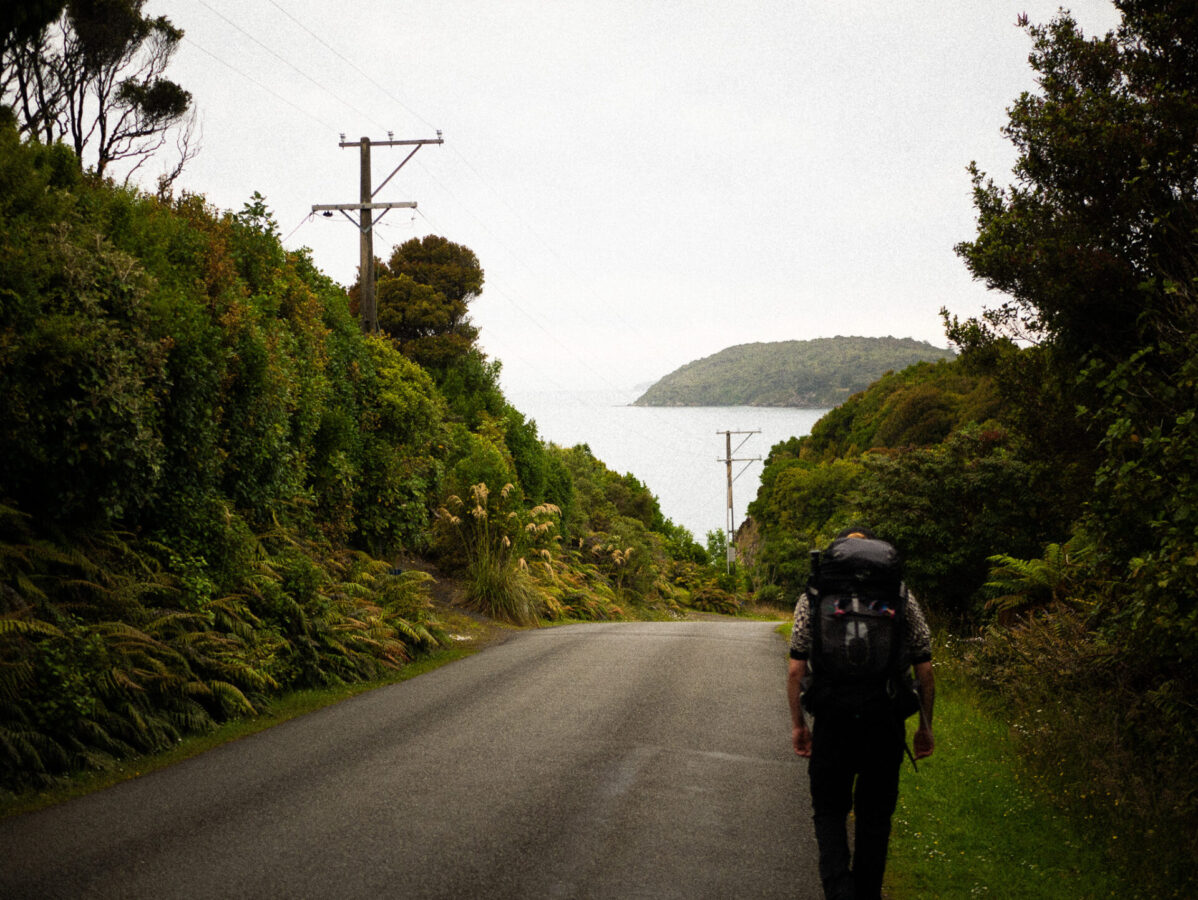
This 3-day hike lies within Rakiura National Park on Stewart Island, just off the coast of the southern tip of the South Island. The loop track follows part of Stewart Island’s coastline, weaves inland through the island’s native forest, and then turns back along the opposite coastline and then into the main township, Oban. Aside from the obvious access to remote beaches and interesting island flora, rare endemic bird encounters are a main draw for many hikers wanting to do this track.
In particular, the kiwi – a rather odd bird species that lives nowhere else in the world but the islands of New Zealand – is a huge draw for visitors to Stewart Island. A nocturnal, flightless and tailless bird that has evolved over millions of years living with no mammalian predators, it has now become endangered due to a few introduced mammal species (stoats, possums, rats, and ferrets, to name a few). On Stewart Island, there are less predators and the population greatly outnumbers that of humans on the island, so it’s known as a great place to see them after dark.
I was eager to spot a kiwi or two and of course experience the mostly untouched island, so I made sure that I got on a ferry to Stewart Island this summer with all my backpacking gear in tow. The Rakiura Track was my third Great Walk after doing the Routeburn Track and the Kepler Track. The latter two were so inspiring that I have made it a mission to do a few more Great Walks before I leave this beautiful country.
While I’m so glad that I witnessed a little sliver of Stewart Island, I have other thoughts about the Rakiura Track itself! Below I explain the story of our three days on the Rakiura Track and what I learned about how best to do Stewart Island.
Day 1: Oban to Maori Beach
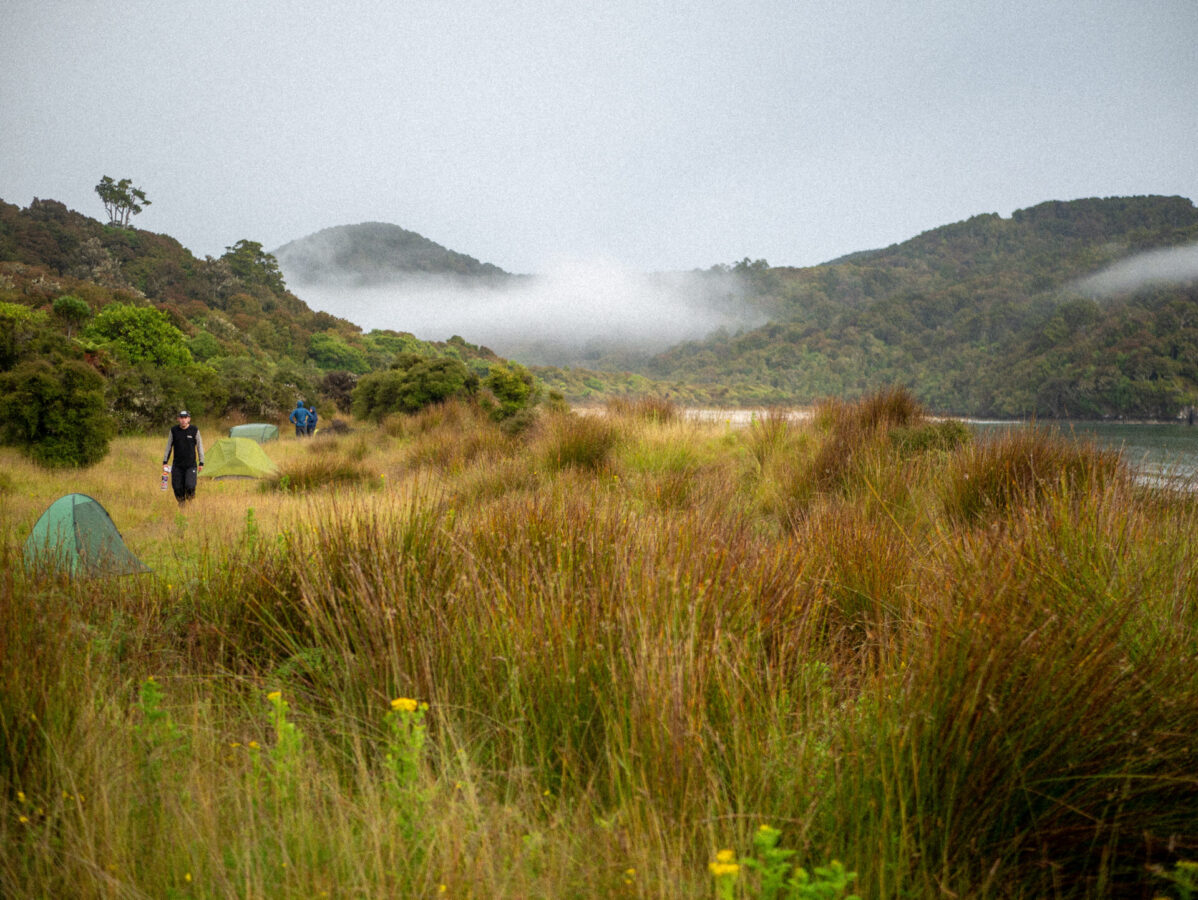
Coastal Views With an End on the Beach
Our first day was delightful. We took our ferry from Bluff to Oban, went to the Rakiura National Park Visitor Center and grabbed a coffee at the Old Butchery Cafe before we headed out.
At first, we walked for about an hour from Oban along a main road that brought us to the start of the Rakiura Track. Even though we didn’t technically start on the official track when we left Oban, the road brought us by a few pretty beaches and we got our first taste of the views and tropical woodlands we might be seeing on our hike. Once we began the track at Lee Bay, we weaved through forest and coastline for a couple more hours before making it to our campsite for the night at Maori Beach.
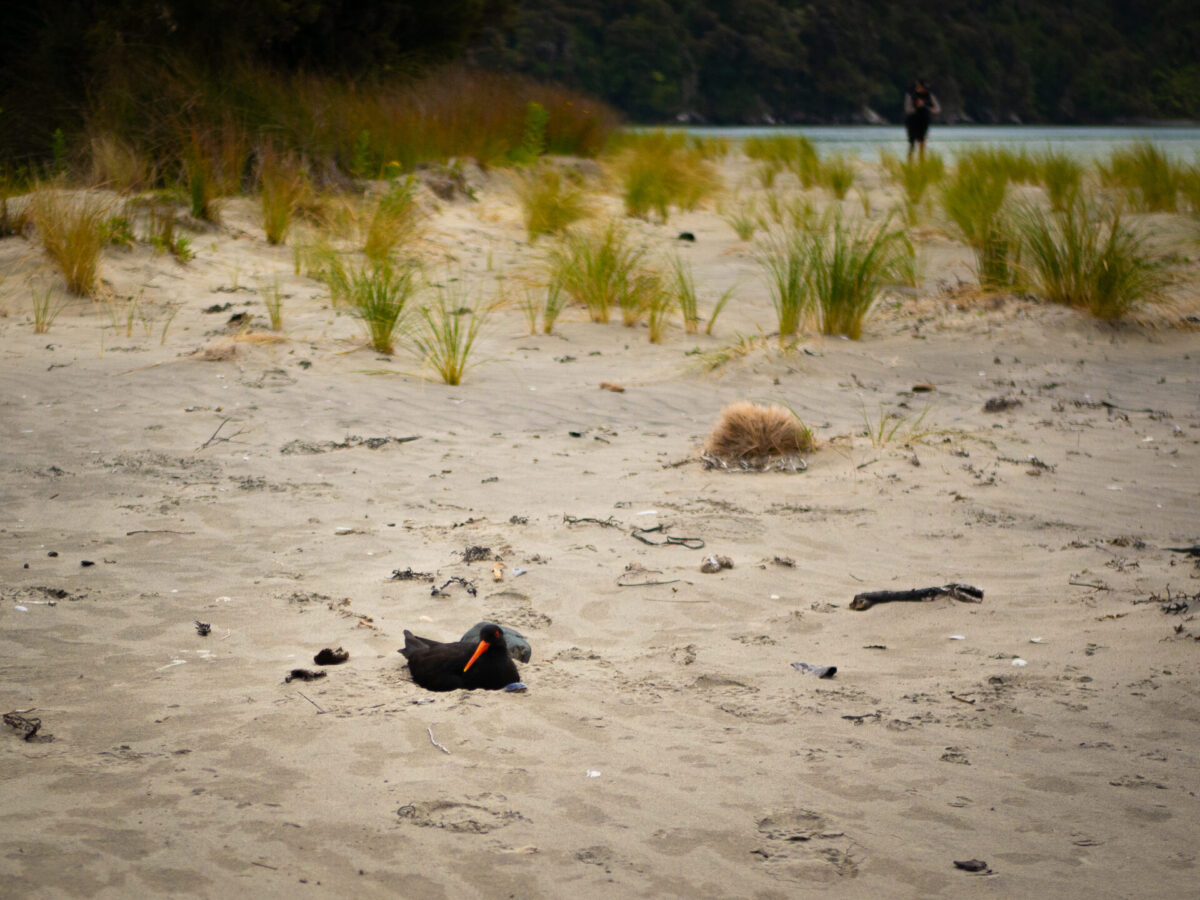
Our quaint campsite was right on a grassy patch adjacent to the sand dunes. Since this beach can only be reached by walking the Rakiura Track or taking a boat, it’s quite remote. The lack of people ensures that wildlife can safely have a home here, and it’s common to find nesting birds or seals hanging out there. Indeed, I almost walked right into a nesting oystercatcher plopped in the sand! Thankfully, it warned me of its presence with a few loud honks so I changed course to avoid it. Unfortunately there was also a gruesome number of sandflies at this site, but given the location and scenery we didn’t mind too much (though we did use plenty of bug spray).
A Kiwi Encounter?!
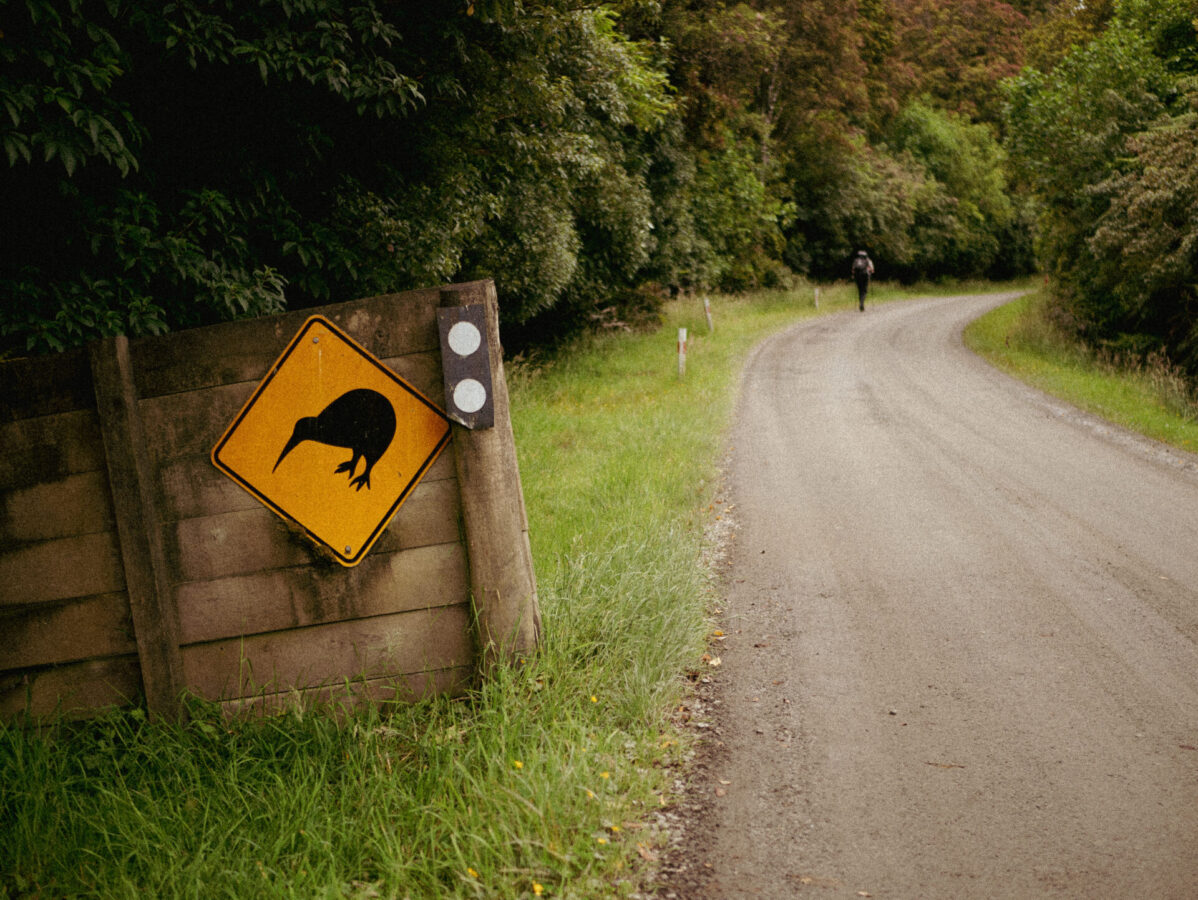
That night, we woke up around 11:30 pm after a nice nap in our tent: it was time to go looking for kiwis! I used the red light setting on my headlamp, as bright lights tend to scare them away, and we began our search in the dark.
Across the meadow from the tent, I spotted two pairs of red eyes glowing from the dim light of my headlamp. Kiwis?! I wasn’t so sure – my boyfriend saw a rat run by our cooking shelter earlier that evening, so possibly, I thought, there were rats around. They ran away before I could get close enough, so we continued on through a nearby path in the woods.
Up the path, again – at least two or three pairs of red eyes looking at us in the darkness! What could they be?! I stopped walking, since every pair of eyes looked over at us – apparently our (very quiet) footsteps and whispers weren’t quiet enough for them. My boyfriend nudged me to slowly get closer, but they could still hear us, as they stayed alert. We took turns stopping to be quiet and then slowly tiptoeing up the path towards them. Suddenly, one of them started sprinting towards us. It happened so fast, and I panicked as its little pounding feet came closer, so I stomped one of my feet to let it know it was about to crash into me, and then it turned high tail into the bushes right to my left!
So caught up in the fear of the moment of this unknown creature charging at me that I never even saw the thing run directly underneath my red light and zoom into the bushes. My boyfriend saw, however, and confirmed that it was indeed a kiwi. By the time we processed the event with panicked whispers, we looked up the path again and saw that the other pairs of red eyes had all vanished, and there was nothing more but silence. We waited on that path, quiet and still, for several more minutes to see if any of them would wander back out again, but nothing. It seemed that my loud foot stomp spooked them all away.
- (Side note: I was SO curious about this behavior, so when I got off the Rakiura Track, I started Googling. According to Save the Kiwi, despite popular belief adult kiwis are quite territorial and often chase other intruding kiwis out of their range. They can even run as fast as humans when spooked or angry.
[Kiwis] are super strong, territorial and can be extremely bad tempered. Adult birds use their razor-sharp claws as weapons, and a couple of slashes can draw blood.
Save the Kiwi
- This behavior paired with their poor vision explains what happened out there that night: perhaps the kiwi thought we were just some intruding kiwis encroaching on their range! Furthermore, had I not stomped my foot so loudly, that very kiwi may have slashed my shins open!)
We turned around and tried another side path near the campsite. Another pair of red eyes, looking up at us. We slowly inched closer to get a better look, but it took off into the brush. We waited further, until we heard some rustling in the bushes on the opposite side. We waited for the creature to reveal itself, to no avail – it stayed meandering around but hidden from sight.
We gave up and walked back towards the campsite, where I found yet again a pair of red eyes staring at us from the meadow in front of the cooking shelter. Having learned quickly from our previous encounters that night, we were more silent and slower-creeping this time. The creature could still hear us and stayed alert, but we were able to get close enough to see the outline of… a long fluffy tail and round ears. Definitely not a kiwi! It was only a possum – an introduced predator of the kiwi and one of the reasons they are endangered.
We finally went back to the tent and slept, feeling disappointed and a little shocked that a kiwi charged us, while questioning how many of those red eyes were even kiwis after all.
Day 2: Maori Beach to North Arm
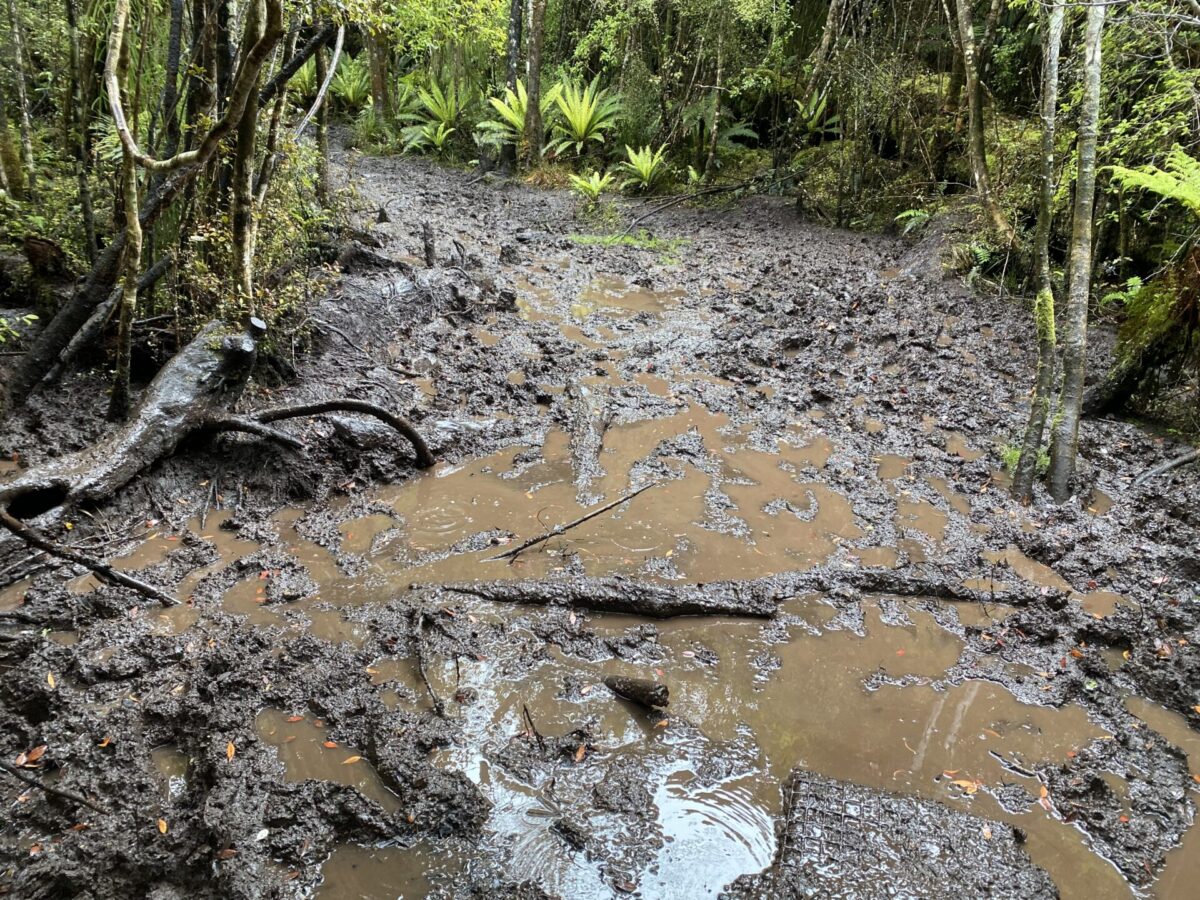
A Rainy, Muddy Nightmare
We woke up on the second day to loud rain outside of our tent. Hiking in the rain isn’t always fun, but what’s even less fun is packing up a wet tent in the rain. Thankfully by the time we got out of bed and made breakfast under the cooking shelter, the rain let up enough for me to take the tent down without completely soaking the inside.
After toweling dry the outside of my tent, we left Maori Beach with our rain gear on and waterproof covers over our backpacks, but within about an hour of our hike, my “waterproof” rain jacket had already soaked through. We both trudged on through the rain getting more wet with every step. Around the midway point that day, we came across the muddiest mess I’ve ever seen on a hiking trail.
For roughly one whole hour at least, we creeped through ankle deep mud as wide as the widest parts of the trail, stopping after every muddy section to decide a course for the next. Should I step there or here? Several times I forged a new trail through the bushes on the side, soaking myself further with heavy rain drops from every branch and tree that I pushed aside as I passed. Several other times I stepped into mud that sunk a little deeper than I thought it would, eventually completely encasing my hiking boots in wet brown muck. Each of us fell at least once or twice in the mud, adding more insult to our already wet, muddy day. By the end of it, we were both completely soaked, covered in mud and our boots were no longer dry inside or out.
Thankfully sometime during the last couple hours of our hike, the rain let up and a bit of sunshine poked out through the trees. Our clothes dried off slightly before we reached our campsite at the North Arm that evening.
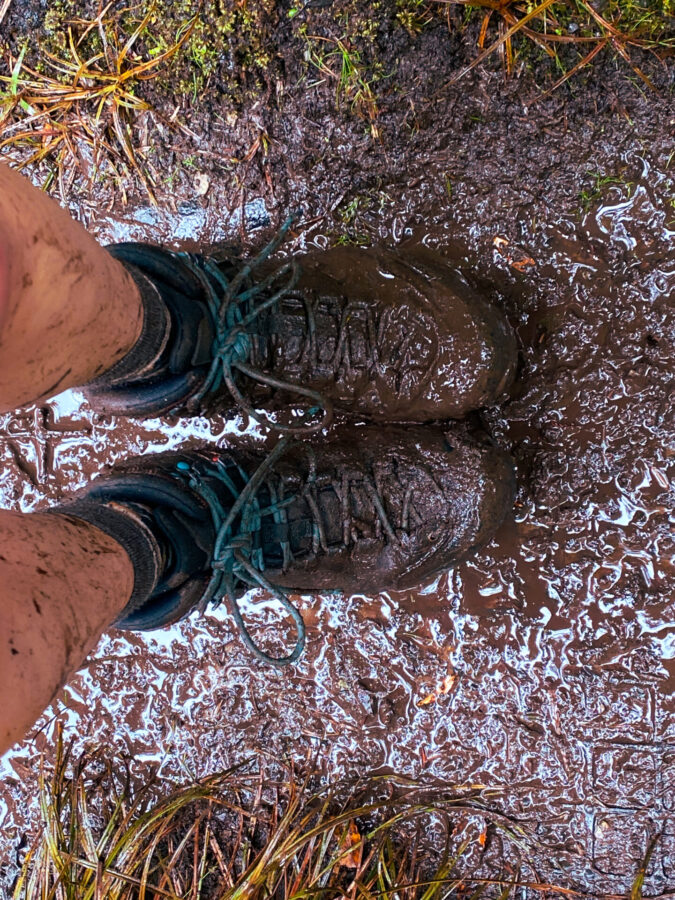
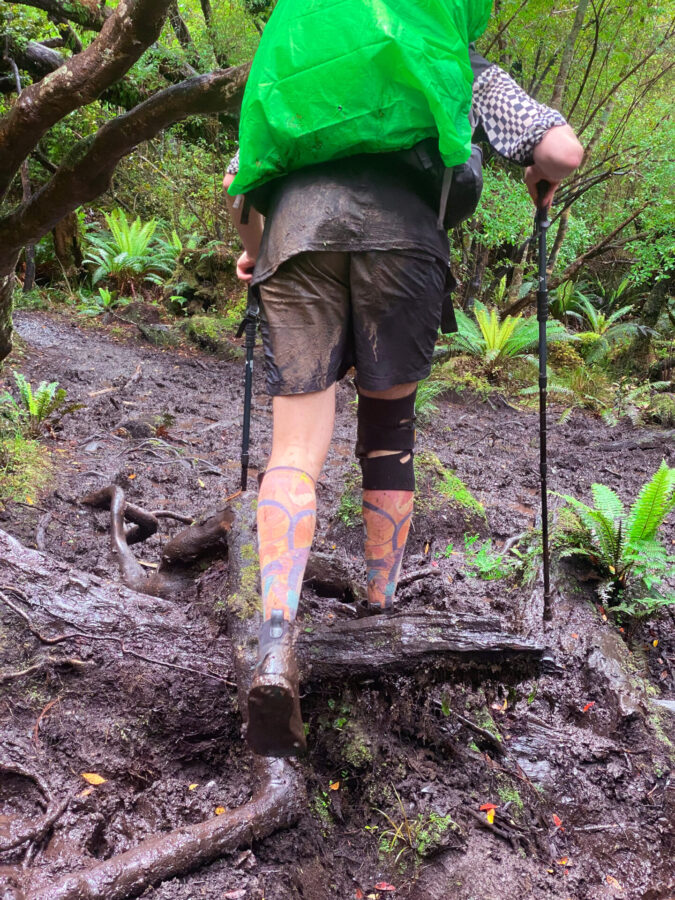
It was a disappointing day, and our campsite deepened that sentiment. It wasn’t set right on the beach, like our campsite was the night before – but up high on a hill completely surrounded by woods. We had no view of the ocean, and in order to get to the beach we would have had to hike down a hill to where the hut was located (and then somehow make it back up to camp without collapsing). Feeling defeated from the day, that walk seemed like too much effort. We were tired, wet and muddy, and even though the rain had let up, it continued to rain on and off for the rest of the evening after we arrived at camp.
After getting the tent set up, we changed into dry clothes and wiped off all the mud. I scrubbed off the outside of my boots, hoping that the inside would dry overnight before the last day of our hike. We ate our dinner and then went to relax in the tent before falling asleep. I had intended to go out looking for kiwis again that night, but after the day we had, I just couldn’t be bothered to go outside and risk getting more wet and muddy in the middle of the night. Instead, I stayed curled up in my sleeping bag while the pounding raindrops splashed mud all over the outside of my tent.
Day 3: North Arm to Oban
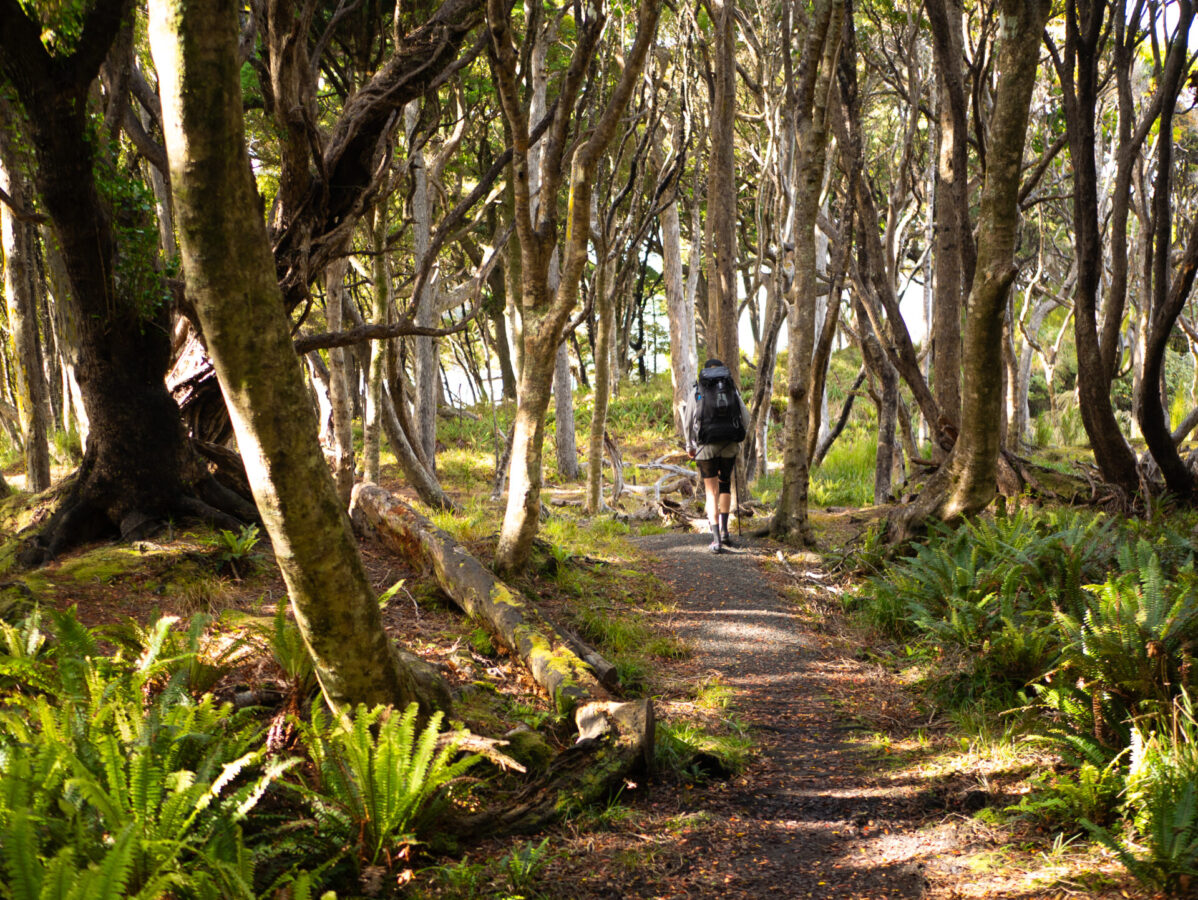
Back on the Coast, but Still Disappointed
We had high hopes for day three. Though our boots were still uncomfortably wet on the inside, we were back on the coast and it wasn’t raining, so we were excited to see some more pretty ocean views and maybe find a swimming spot if the weather warmed up enough.
Sadly we really only saw the coast briefly a few times over our 3.5 hours of hiking. Mostly we were still in the forest area hiking back to Oban. The weather wasn’t so bad, but it was just a little too cold to go swimming anyway.
My main highlight from the day was spotting two pairs of black swans swimming through the Patterson Inlet. That was pretty special, since never before had I seen a black swan in real life before! (And I actually didn’t know they existed.)
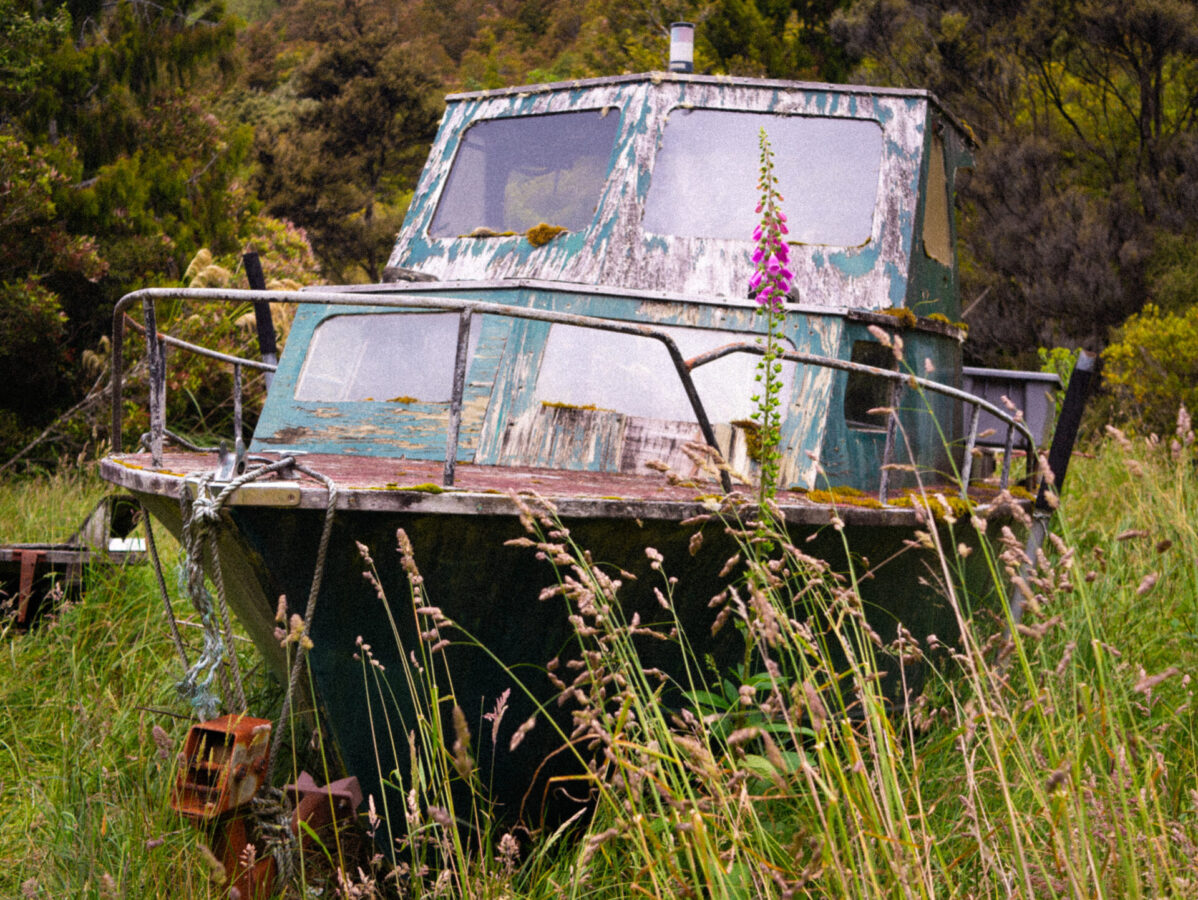
Finally, after reaching the end of our hike, we stumbled down the road in search of some epic fish and chips. We found it at Kai Kart where we demolished two servings of fried blue cod, some homemade coleslaw, and way too many french fries. That meal alone made the last day worth the hike. Afterwards, we meadered our way over to a cafe to chill out and wait for our ferry back to the mainland.
Why I Recommend Stewart Island (But Not the Rakiura Track)
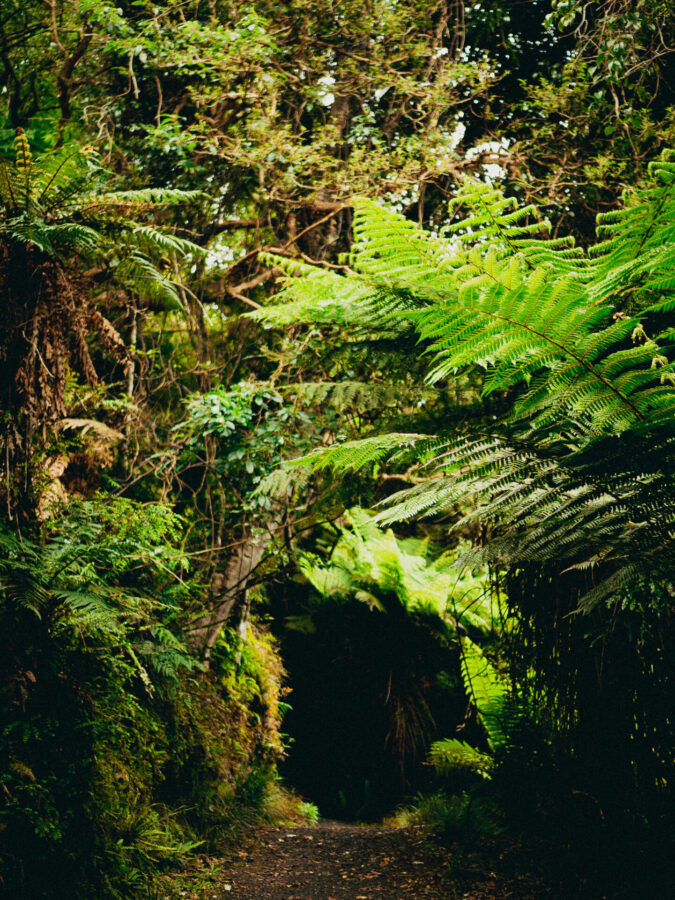
I subject myself to hiking for two reasons: to get some healthy exercise, and to see some amazing views. More specifically, when I’m backpacking, I expect to see some remote places that are off the beaten track and hard to get to. Like, you hike into the woods for a day or two before you see the breathtaking views that you went there for. That’s what makes backpacking so special, even when it’s challenging.
With the Rakiura Track, it was the opposite. The pretty views were on the first and last days of the hike, and the views I did see are also easily accessible via day hikes from Oban. How can I justify carrying a heavy pack with all my gear for multiple days if the places I’m going to visit aren’t so hard to reach? And while some would argue that this track provides unique opportunities to see native island flora and bird viewing, I think there are just as many chances to see them on day hikes around the area.
Stewart Island in itself is a pretty incredible little island with tons to do. You can find rare species of birds on the island, including the kiwi and even penguins. The forest is a wonderland of ancient flora. There are some cute restaurants and shops in tiny little Oban, water activities and plenty of hiking and bird watching. If I were to do this trip over, I’d skip the Rakiura Track and stay in Oban for a few days while doing day hikes around the island and even day trips to some surrounding islands, such as Ulva Island. Since the best parts of the Rakiura Track are also pretty easily accessible via day hikes or even a water taxi from Oban, there is no need to feel like you’re missing out on a great multi-day hiking trip.
In my opinion, save your multi-day hikes for trips that are worth it (like the Routeburn, for example). If you are dead set on doing the Rakiura Track, I’ve also made a separate post with essential tips and information to get you going on the right foot. Maybe by following my advice you’ll have a better hiking trip than me!
Happy hiking y’all! Drop me a line if you liked my story! And please do share with your hiking friends. 🙂
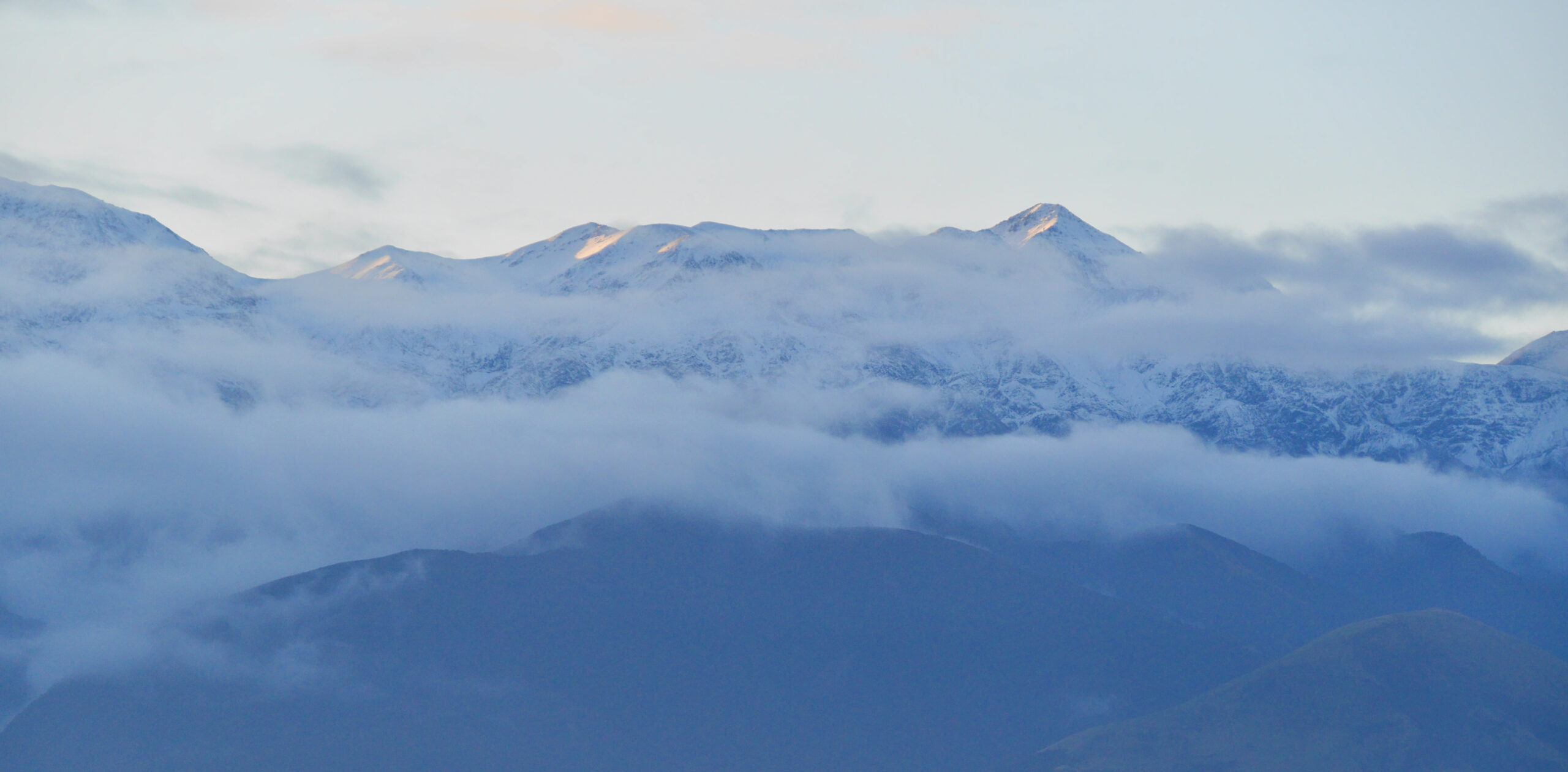

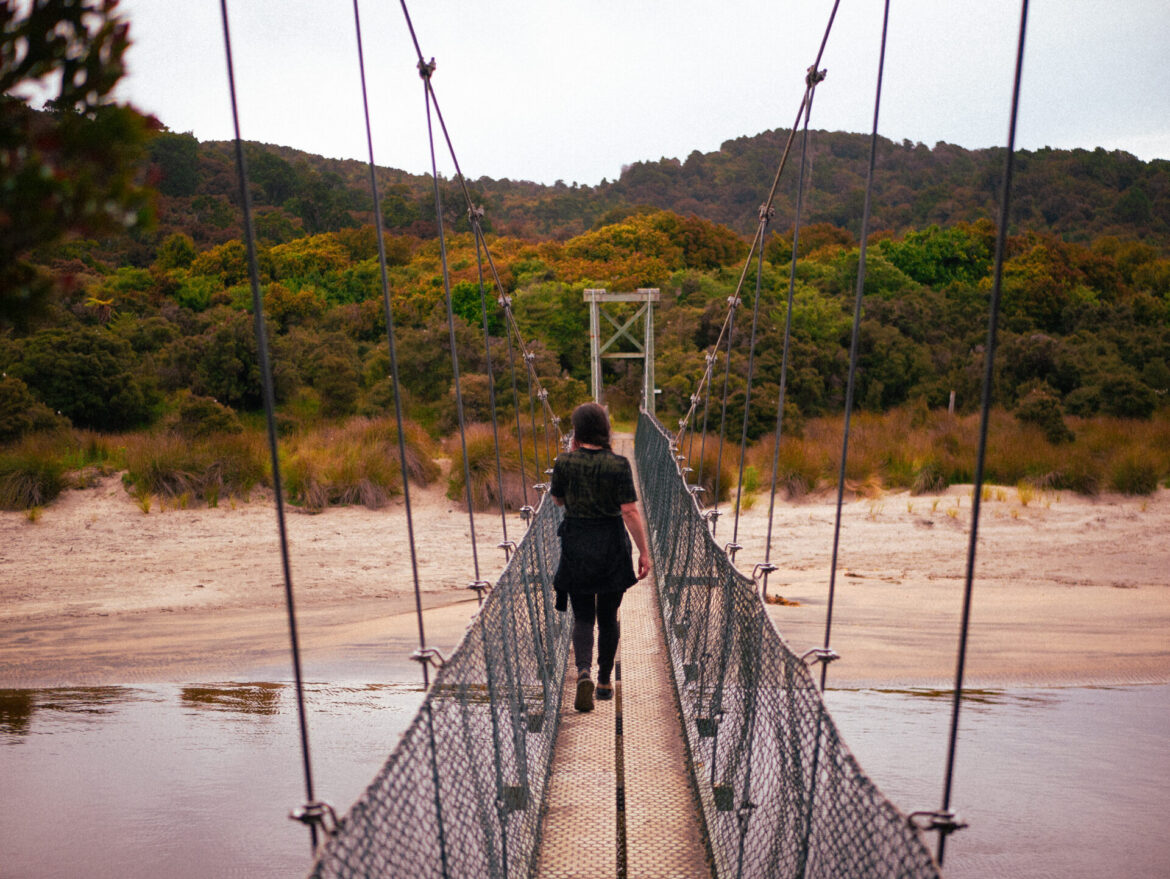
Leave a Reply